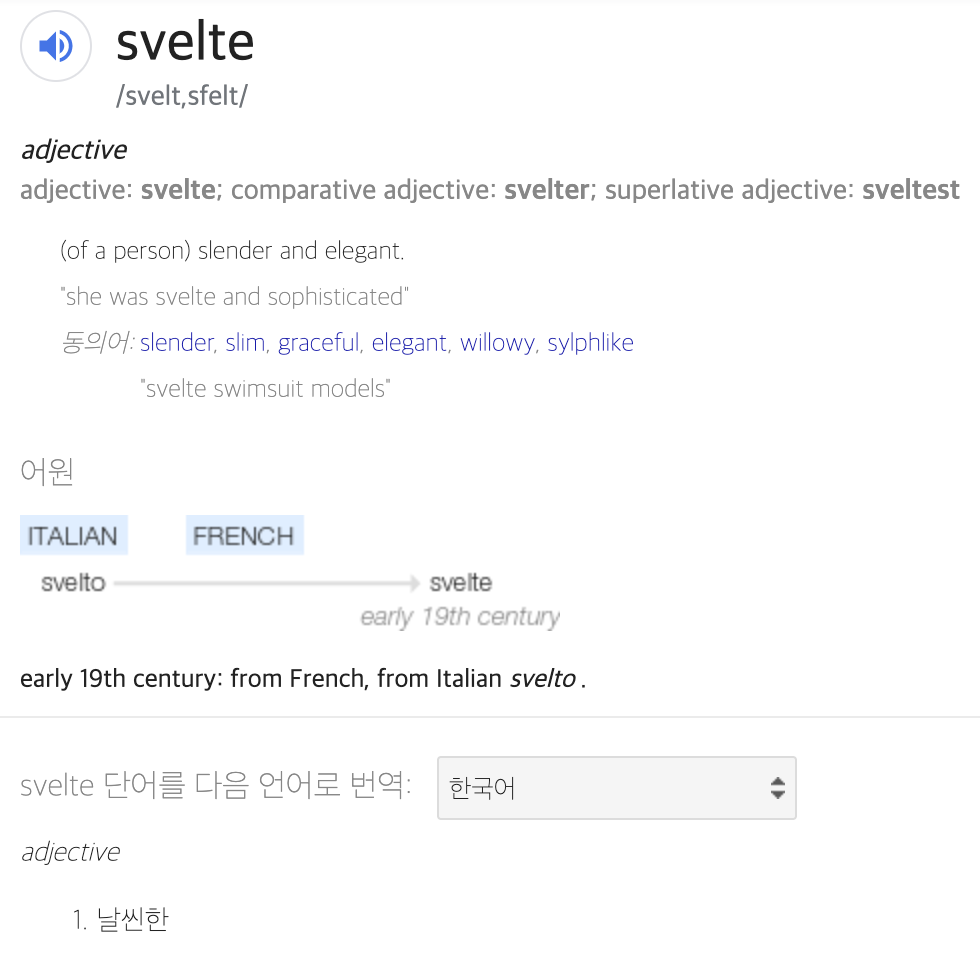Let’s start SVELTE!
Goodbye React & Vue

Dangguen Market, Byun Kyuhyun
W3C Conference Korea 2019
Who am I?

- Danggeun Market Software engineer
- AWSKRUG Serverless Group Organizer
- CircleCI User Group Organizer
- Node.js, AWS, DevOps, Serverless
- Golang, Typescript, Javascript
- https://novemberde.github.io
- https://github.com/novemberde

What is svelte?
Cybernetically enhanced web apps

*Write less code
*No virtual DOM
Write less code
for (let i = 0; i <= 100; i += 1) {
if (i % 2 === 0) {
console.log(`${i} is even`);
}
}
for (let i = 0; i <= 100; i += 1) if (i % 2 === 0) console.log(`${i} is even`);
Write less code
Write less code - How about React?
import React, { useState } from 'react';
export default () => {
const [a, setA] = useState(1);
const [b, setB] = useState(2);
function handleChangeA(event) {
setA(+event.target.value);
}
function handleChangeB(event) {
setB(+event.target.value);
}
return (
{a} + {b} = {a + b}
);
};
Write less code - How about Vue?
{{a}} + {{b}} = {{a + b}}
Write less code
- React - 442 Characters
- Vue - 263 Characters
- Svelte - 145 Charaters
Write less code
Top-level elements
- React: <> or <div>
- Vue: <template>
- Svelte: As many as you want to create
Write less code - state
Update local component state in Svelte:
let count = 0;
function increment() {
count += 1;
}
Use the useState hook in react:
const [count, setCount] = useState(0);
function increment() {
setCount(count + 1);
}
Write less code
Death to boilerplate
No virtual dom
Are you a React developer?
You may think this is nonsense
Since 2013... you heard that the virtual DOM is fast!

Screenshot from at JSConfEU 2013

Screenshot from at JSConfEU 2013
Few minutes later...He said:
- React is not magic.
- Just like you can drop into assembler with C and beat the C compiler, you can drop into raw DOM operations and DOM API calls and beat React if you wanted to.
- However, using C or Java or JavaScript is an order of magnitude performance improvement because you don't have to worry...about the specifics of the platform.
- With React you can build applications without even thinking about performance and the default state is fast.
Virtual DOM is slow?
the virtual DOM is usually fast enough.
- The original promise of React was that you could re-render your entire app on every single state change without worrying about performance.
- there'd be no need for optimisations like shouldComponentUpdate (which is a way of telling React when it can safely skip a component).
Virtual DOM is slow?
- Even with shouldComponentUpdate, updating your entire app's virtual DOM in one go is a lot of work.
- The React team introduced something called React Fiber which allows the update to be broken into smaller chunks.
- This means (among other things) that updates don't block the main thread for long periods of time, though it doesn't reduce the total amount of work or the time an update takes.
Where does the OVERHEAD come from?
Diffing isn't free